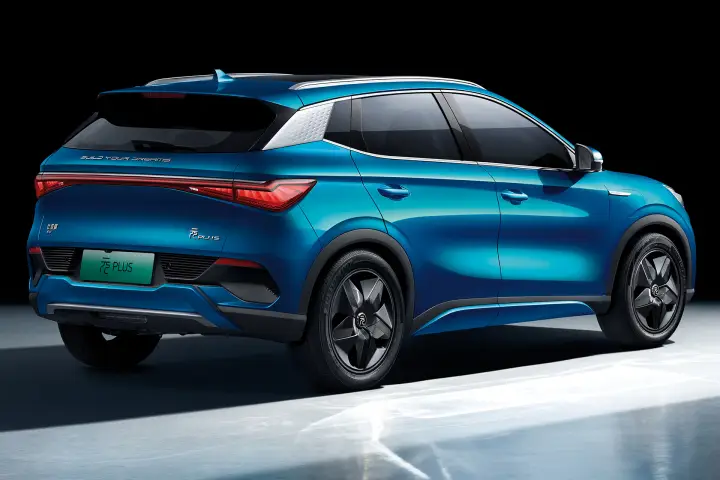The electric vehicle (EV) market is buzzing with excitement as 2024 ushers in a new wave of tax credits designed to accelerate the transition to sustainable mobility. According to Reuters Mobility, the global EV market is projected to reach $802 billion by 2027, driven by government incentives and growing environmental awareness. But how exactly are these 2024 EV tax credits shaping the future of electric mobility? In this article, we’ll explore the latest developments in EV tax credits, uncover how they impact consumer decisions, and offer insights into what this means for the future of urban transport.
The Impact of 2024 EV Tax Credits on Consumer Choices
Understanding the New Tax Credits
The 2024 EV tax credits are part of a concerted effort by governments worldwide to meet ambitious carbon reduction targets. In the United States, the Inflation Reduction Act extends and expands the federal EV tax credit, offering up to $7,500 for qualifying vehicles. These credits aim to make electric cars more affordable for the average consumer, thus accelerating the adoption of clean energy vehicles.
- Eligibility Requirements: Vehicles must meet specific criteria, including price caps and domestic manufacturing requirements. For instance, the credit applies only to sedans under $55,000 and SUVs under $80,000.
- Manufacturers Affected: Brands like Tesla, Rivian, and Ford EV are among those striving to meet these requirements by ramping up local production and adjusting pricing strategies.
Global Influence on Electric Mobility
Globally, countries like Germany and China are also enhancing incentives. According to Bloomberg Green, Germany is offering up to €9,000 in rebates for electric cars, while China continues to lead with subsidies and an extensive charging network. These moves are not just about reducing emissions; they reflect a strategic shift toward sustainable urban transport.
How Tax Credits Drive Market Growth
Boosting EV Sales
The availability of substantial tax credits directly influences consumer purchasing decisions. According to InsideEVs, the introduction of new credits in 2024 could increase EV sales by up to 30%. This surge is not only beneficial for manufacturers but also signifies a pivotal shift in consumer behavior towards sustainable choices.
- Price Comparison: With tax credits, the cost gap between EVs and traditional vehicles narrows significantly. For example, a Tesla Model 3 might become comparable in price to a high-end gasoline vehicle after credits.
- Increased Accessibility: More affordable EVs mean broader access for middle-income families, which could lead to a more diverse market and increased demand for a wider range of models.
Encouraging Technological Advancements
The promise of tax credits also incentivizes manufacturers to innovate. Companies like Lucid Motors and Hyundai are investing heavily in battery technology and autonomous driving features to stand out in a competitive market.
- Battery Innovations: According to Battery University, advancements in solid-state batteries could lead to faster charging times and longer ranges, making EVs even more appealing.
- Autonomous Driving: TechCrunch highlights that improved AI and machine learning technologies are being integrated into new models, offering enhanced safety and convenience.
Practical Value: Maximizing the Benefits of EV Tax Credits
Choosing the Right EV
When considering an EV purchase, it’s essential to understand which models qualify for tax credits and how to maximize these benefits.
- Research Eligible Models: Use resources like AutoCar and Electrek to find a list of qualifying vehicles that meet your needs and budget.
- Consider Total Cost of Ownership: Factor in not just the purchase price but also savings on fuel, maintenance, and potential resale value.
Where to Buy and Charge
Finding the right place to purchase and charge your EV is crucial for a seamless experience.
- Dealerships and Online Platforms: Brands like Volkswagen and Nissan offer both in-dealership and online purchasing options, often with additional incentives.
- Charging Infrastructure: With expanding networks, charging your EV is becoming more convenient. PV Magazine reports that by 2025, there will be over 500,000 public charging stations in the U.S. alone.
Engaging Conclusion
The 2024 EV tax credits are more than just a financial incentive; they are a catalyst for change in the automotive industry. By making electric vehicles more accessible and affordable, these credits are shaping a future where sustainable mobility is the norm, not the exception. As urban transport evolves, now is the perfect time to consider making the switch to an electric vehicle. What are your thoughts on these changes? Are you ready to drive into a greener future? Join the conversation and share your views.
Looking ahead, the ongoing innovations in battery technology and autonomous driving capabilities promise to make EVs even more appealing. As we move towards a more sustainable future, the role of government incentives will be crucial in maintaining momentum and ensuring that the transition to electric mobility is both swift and equitable.

